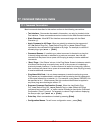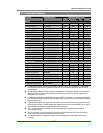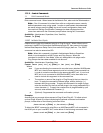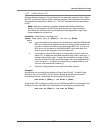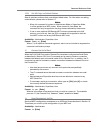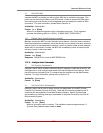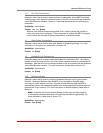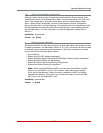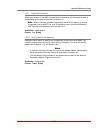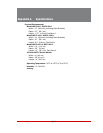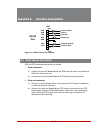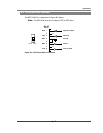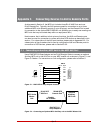
17-9
Command Reference Guide
/K Send SSH Key
Instructs the MPC to provide you with a public SSH key for validation purposes. This
public key can then be provided to your SSH client, in order to prevent the SSH client
from warning you that the user is not recognized when you attempt to create an SSH
connection. For more information, please refer to Section 10.
Availability: Administrator
Format:
/K k [Enter]
Where k is a required argument, which indicates the key type. The k argument
provides the following options: 1 (SSH1), 2 (SSH2 RSA), 3 (SSH2 DSA.)
/UL Unlock Port (Invalid Access Lockout)
Manually cancels the MPC’s Invalid Access Lockout feature. Normally, when a series of
failed login attempts are detected, the Invalid Access Lockout feature can shut down the
network port for a user specified time period in order to prevent further access attempts.
When the /UL command is invoked, the MPC will immediately unlock all network ports
that are currently in the locked state.
Availability: Administrator
Format:
/UL [Enter]
Response: The MPC will unlock all MPC RS232 Ports.
17.3.3. Configuration Commands
/F Set System Parameters
Displays a menu which is used to define the Site ID message, create user accounts, set
the system clock, and configure and enable the Invalid Access Lockout feature. Note
that all functions provided by the /F command are also available via the Web Browser
Interface. For more information, please refer to Section 5.3.
Availability: Administrator
Format:
/F [Enter]
/P Set Serial Port Parameters
Displays a menu that is used to select options and parameters for the MPC's Serial
Console Port, Remote Port and AUX Ports. Note that all functions provided by the /P
command are also available via the Web Browser Interface. Section 5.8 describes
the procedure for defining serial port parameters for both the Console Port and RJ-45
Remote and AUX ports.
Availability: Administrator
Format:
/P <n> [Enter]
Where n is the port name or number. The available command arguments are "1"
(Console Port), Remote, AUX1, AUX2 or AUX2.



